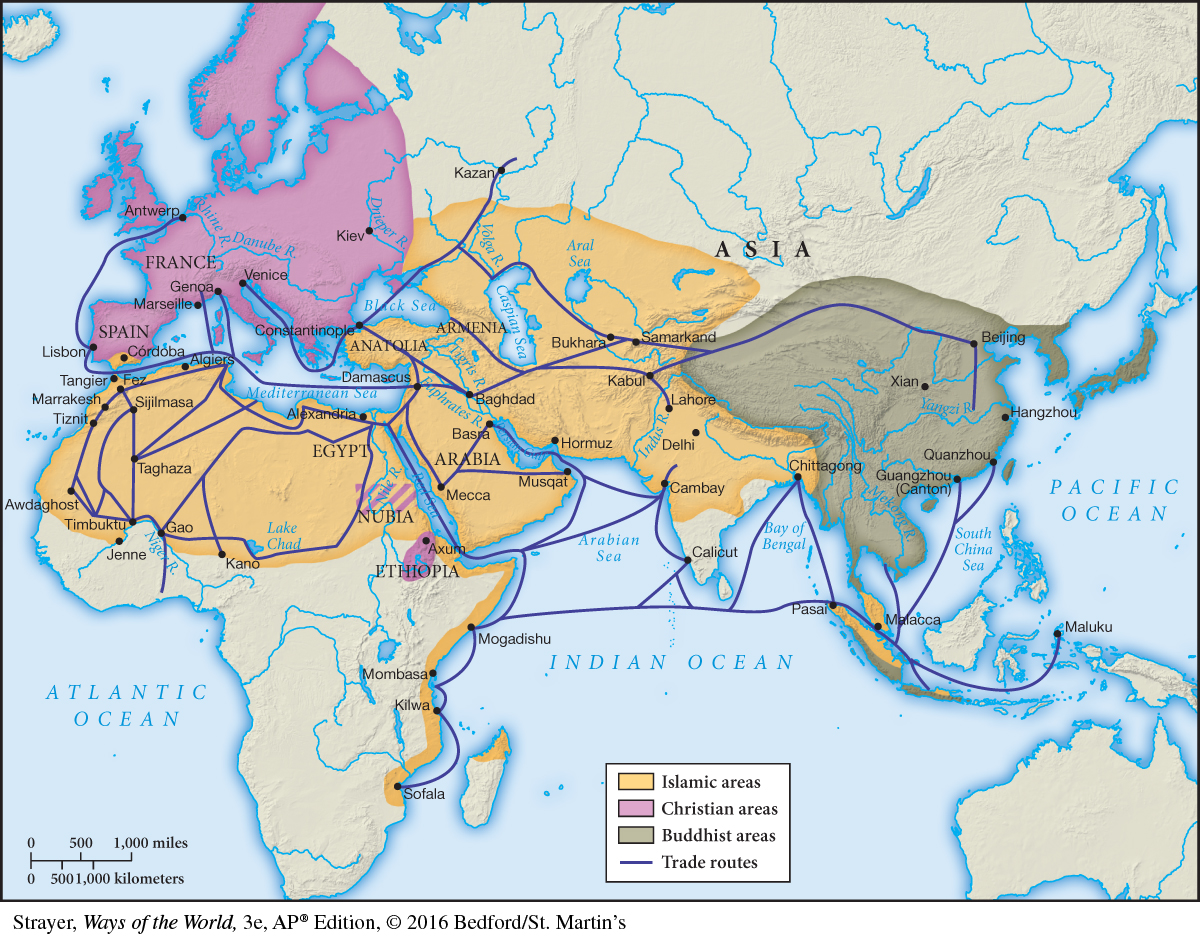Webs of Connection
AP® EXAM TIP
Pay close attention to this section about political, cultural, and economic links in the fifteenth-century world.
Few people in the fifteenth century lived in entirely separate and self-contained communities. Almost all were caught up, to one degree or another, in various and overlapping webs of influence, communication, and exchange.21 Perhaps most obvious were the webs of empire, large-scale political systems that brought together a variety of culturally different people. Christians and Muslims encountered each other directly in the Ottoman Empire, as did Hindus and Muslims in the Mughal Empire. And no empire tried more diligently to integrate its diverse peoples than the fifteenth-century Incas.
Guided Reading Question
▪CONNECTION
In what different ways did the peoples of the fifteenth century interact with one another?
Religion too linked far-flung peoples, and divided them as well. Christianity provided a common religious culture for peoples from England to Russia, although the great divide between Roman Catholicism and Eastern Orthodoxy endured, and in the sixteenth century the Protestant Reformation would shatter permanently the Christian unity of the Latin West. Although Buddhism had largely vanished from its South Asian homeland, it remained a link among China, Korea, Tibet, Japan, and parts of Southeast Asia, even as it splintered into a variety of sects and practices. More than either of these, Islam actively brought together its many peoples. In the hajj, the pilgrimage to Mecca, Africans, Arabs, Persians, Turks, Indians, and many others joined as one people as they rehearsed together the events that gave birth to their common faith. And yet divisions and conflicts persisted within the vast realm of Islam, as the violent hostility between the Sunni Ottoman Empire and the Shia Safavid Empire so vividly illustrates.
Long-established patterns of trade among peoples occupying different environments and producing different goods were certainly much in evidence during the fifteenth century, as they had been for millennia. Hunting societies of Siberia funneled furs and other products of the forest into the Silk Road trading network traversing the civilizations of Eurasia. In the fifteenth century, some of the agricultural peoples in southern Nigeria were receiving horses brought overland from the drier regions of Africa to the north, where those animals flourished better. The Mississippi River in North America and the Orinoco and Amazon rivers in South America facilitated a canoe-borne commerce along those waterways. Coastal shipping in large seagoing canoes operated in the Caribbean and along the Pacific coast between Mexico and Peru. In Pacific Polynesia, the great voyaging networks across vast oceanic distances that had flourished especially since 1000 were in decline by 1500 or earlier, leading to the abandonment of a number of islands. Ecological devastation perhaps played a role, and some scholars believe that a cooling and fluctuating climate change known as the Little Ice Age created less favorable conditions for inter-island exchange. The great long-distance trading patterns of the Afro-Eurasian world, in operation for a thousand years or more, continued in the fifteenth century, although the balance among them was changing (see Map 12.6). The Silk Road overland network, which had flourished under Mongol control in the thirteenth and fourteenth centuries, contracted in the fifteenth century as the Mongol Empire broke up and the devastation of the plague reduced demand for its products. The rise of the Ottoman Empire also blocked direct commercial contact between Europe and China, but oceanic trade from Japan, Korea, and China through the islands of Southeast Asia and across the Indian Ocean picked up considerably. Larger ships made it possible to trade in bulk goods such as grain as well as luxury products, while more sophisticated partnerships and credit mechanisms greased the wheels of commerce. A common Islamic culture over much of this vast region likewise smoothed the passage of goods among very different peoples, as it also did for the trans-
AP® EXAM TIP
Study this map closely. It sums up much of the era ca. 600–ca. 1450.
